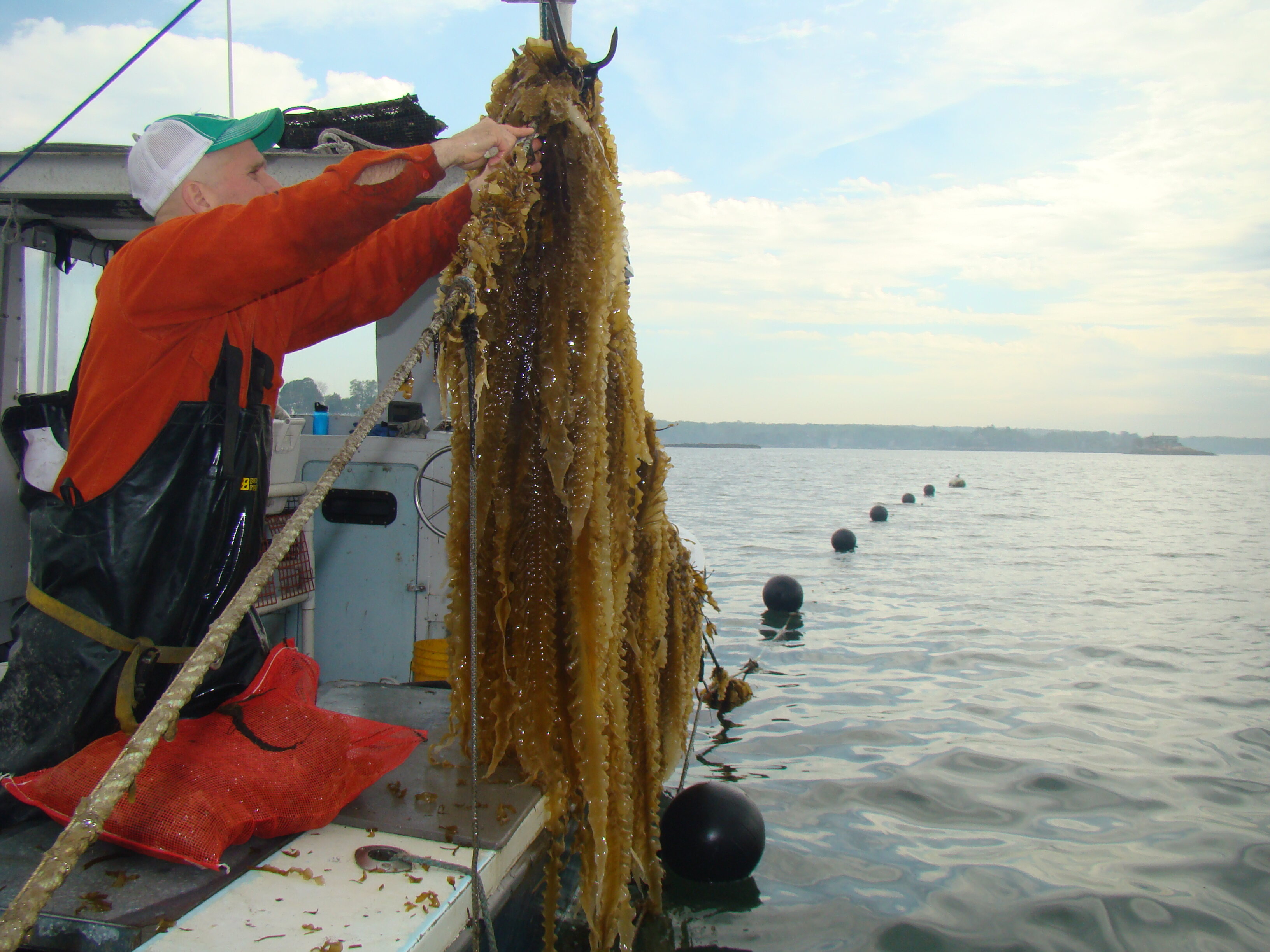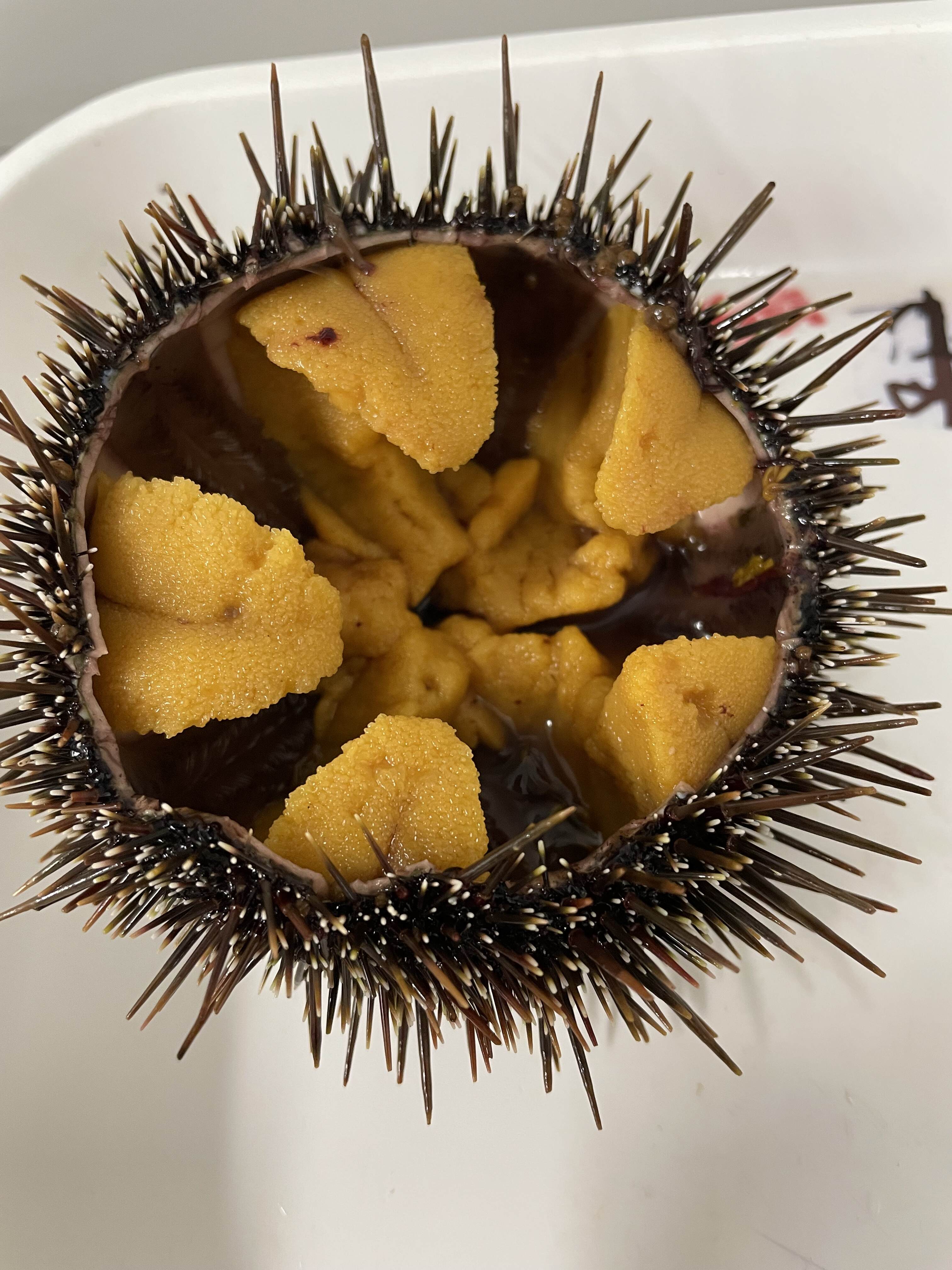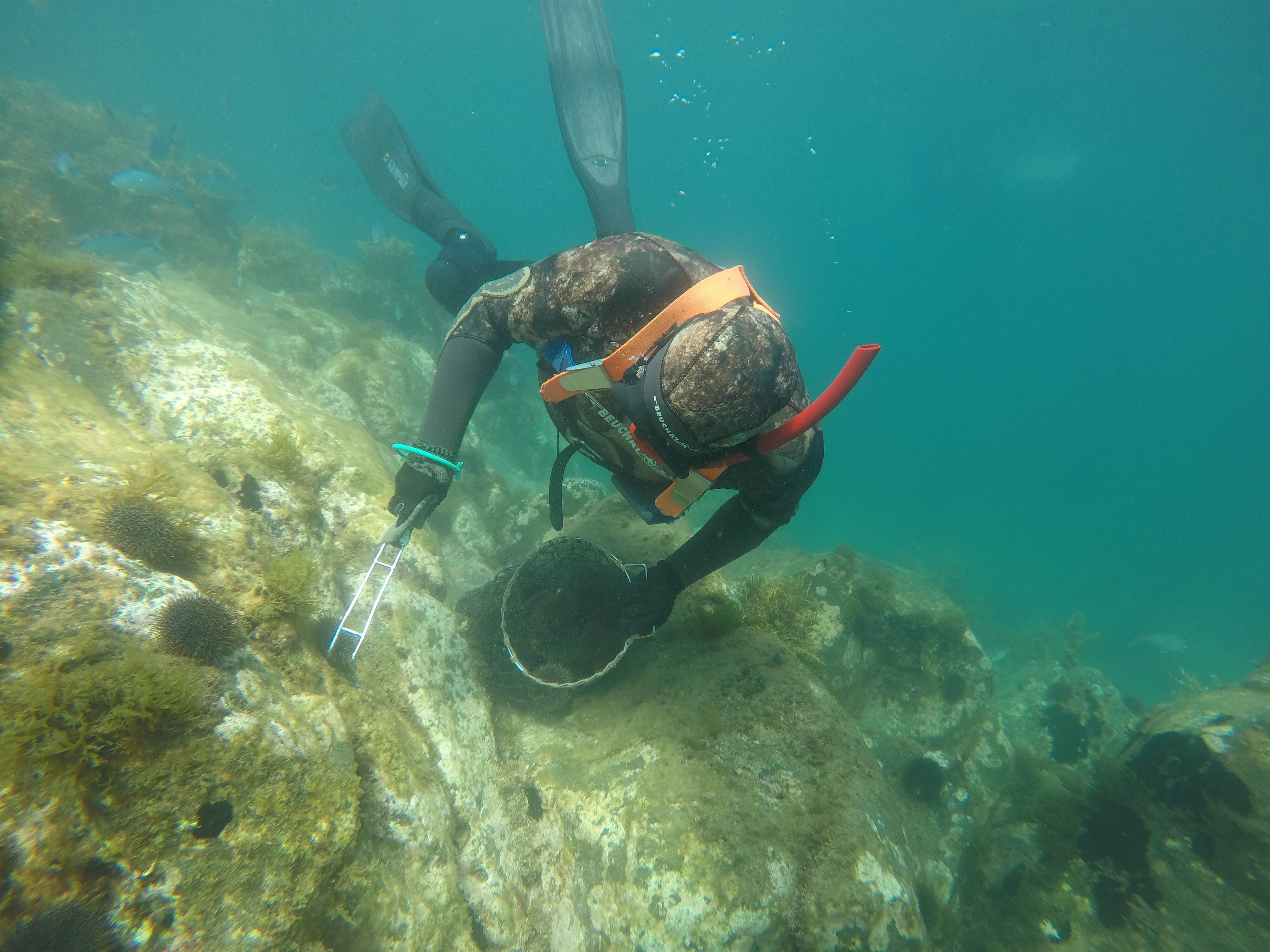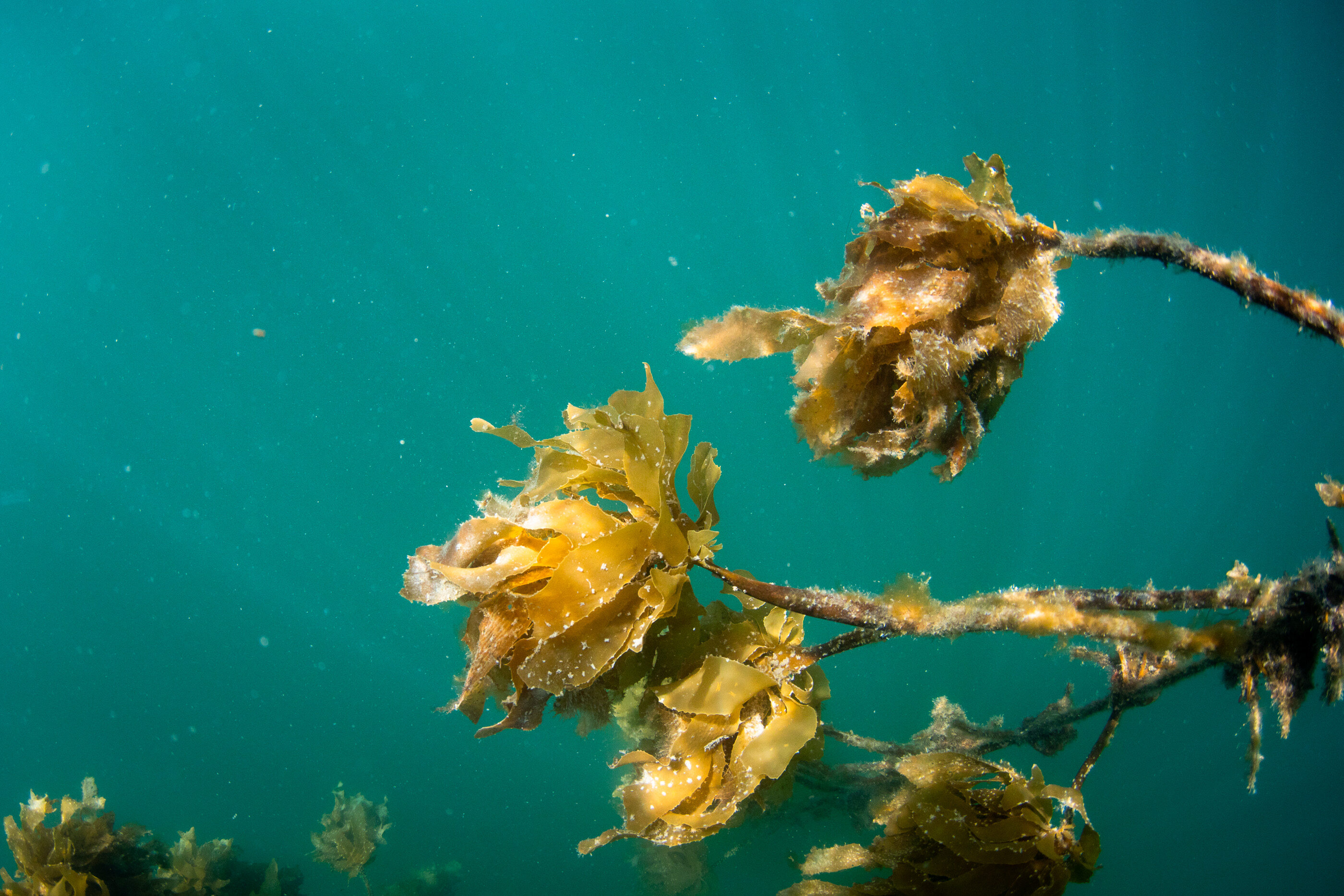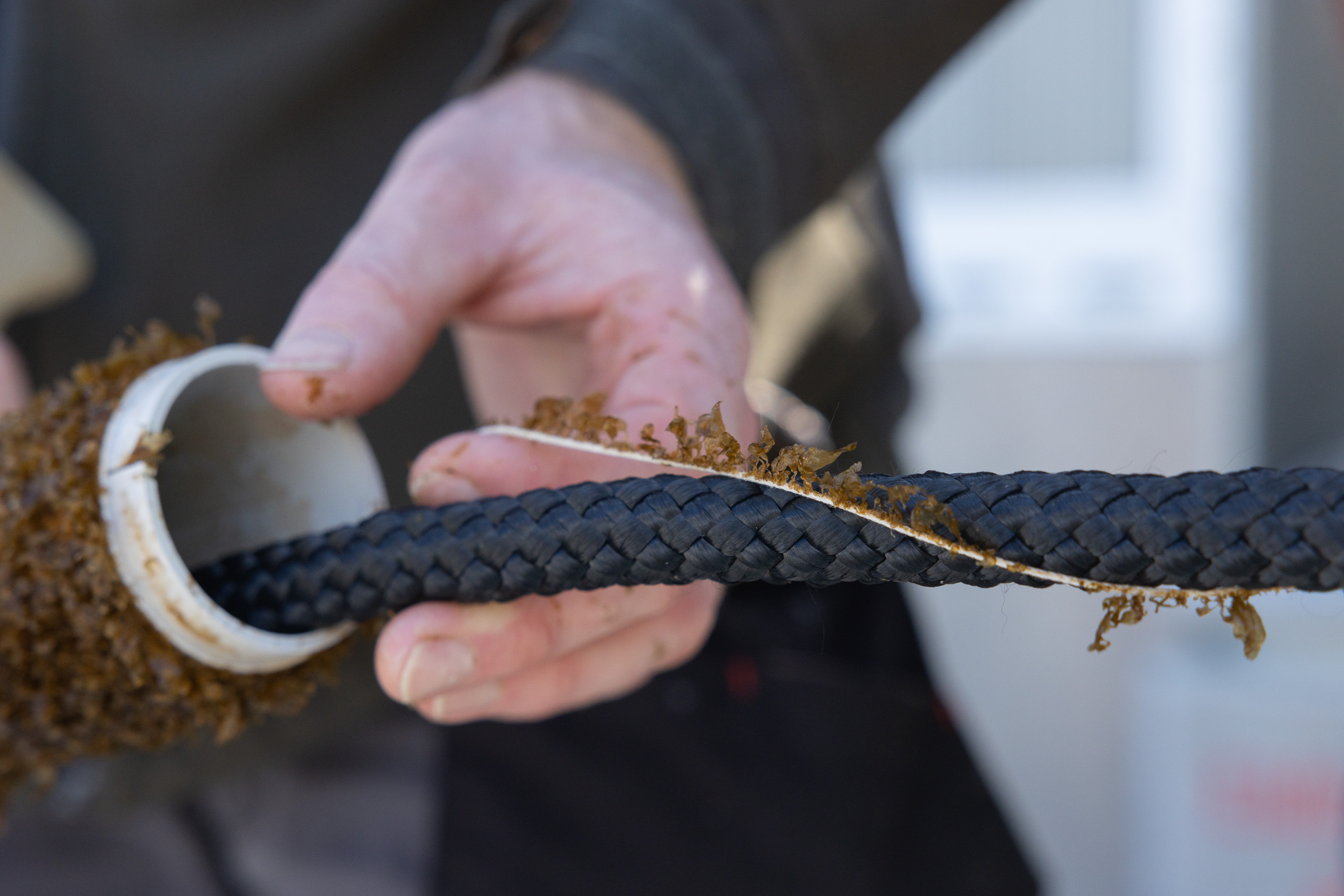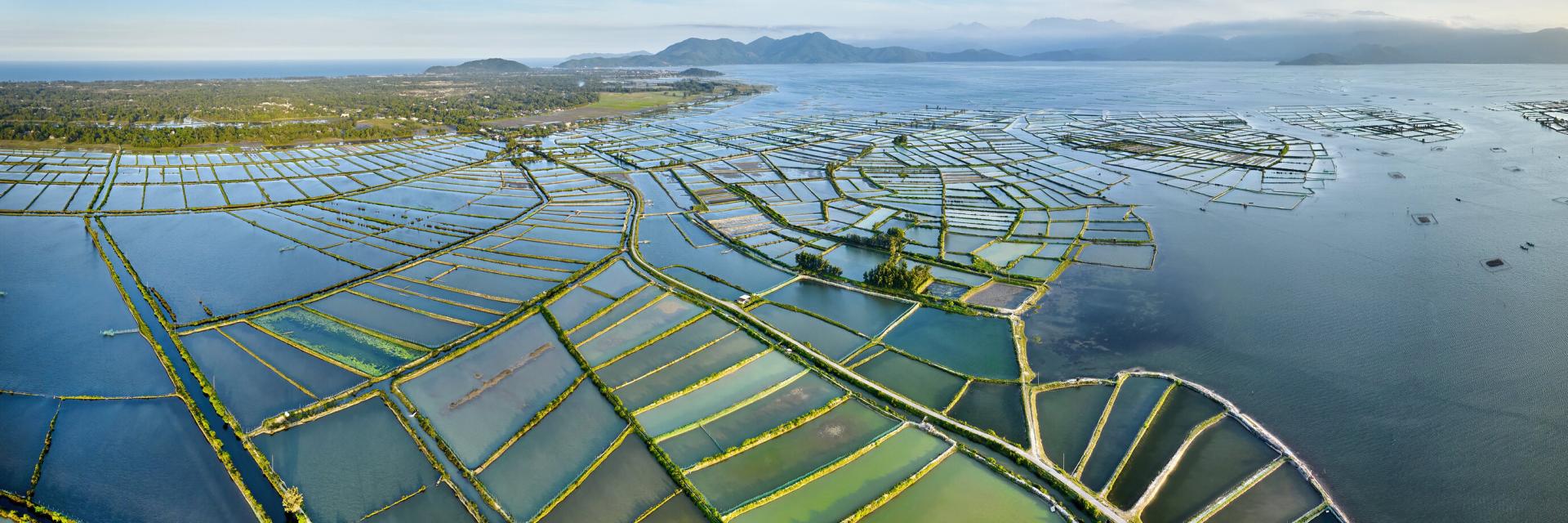
Aquaculture ponds in the Hue coastal lagoons, Vietnam.
Credit: Andrea Pistolesi / Getty ImagesAquaculture
Support regenerative aquaculture for ecosystem health, community resilience, and as an alternative to industrialized “factory farming” in oceans and waterways.
Aquaculture is the cultivation of plant and animal species in water environments for commercial, recreational, and public purposes. Many Indigenous and traditional societies have practiced local aquaculture for centuries. Aquaculture is expanding as an alternative food supply to feed a global population projected to add two billion people by 2050 because wild fish stocks are collapsing and industrial agriculture is depleting land and freshwater supplies. Aquaculture now produces almost half of the seafood consumed globally. However, industrial aquaculture often requires an intensification of production and distribution that can adversely affect environments, communities, and cultures. Further research, improved regulation, and increased investment are needed to mitigate these effects and implement practices that improve human and environmental health. Regenerative aquaculture can enhance food sovereignty and food security, preserve cultural heritage and biological diversity, and strengthen ecosystem and community resilience.
Action Items
Individuals
Learn about the history of aquaculture and its importance for societies around the world. Aquaculture, both on land and at sea, is cited throughout the ancient world. Examples include:
- There is evidence of managed carp aquaculture in ancient China. Seaweed aquaculture is believed to have started in Japan. Egyptian tomb paintings show Nile tilapia being raised in captivity more than 3000 years ago. In ancient Rome, wealthy homes kept fish and crustaceans in pools, and Romans farmed oysters and fish in lagoons.
- Hawaiian fishponds (loko i’a) have been a valued tradition for nearly 1,000 years. According to Hawaiian moʻolelo (oral traditions), Kūʻula – the Hawaiian god of fishing – built the first fishpond on Maui. Explore more lessons from Native Hawaiian aquaculture.
- The Budj Bim aquaculture network created by the Gunditjmara people around 6600 years ago received World Heritage recognition. Aboriginal aquaculture includes the Ngunnhu fish traps on the Barwon River.
- The Pacific Sea Garden Collective created an interactive story map to showcase ancestral aquaculture practices across the Pacific. The Central Institute of Freshwater Aquaculture did a literature review of Indigenous technical knowledge and traditional practices in aquaculture worldwide.
Discover the different forms of aquaculture. Production includes both saltwater and freshwater species and the use of both land-based and marine-based farming systems. Models include:
- Open-net pens: floating cages or enclosures found offshore, in coastal areas, or in freshwater lakes. Salmon are typically farmed this way, which is the second-highest-value farmed fish after shrimp.
- Submersible net pens: an alternative to open net pens, these are fully underwater and often take the form of a large, closed cage.
- Pond systems: inland and isolated pond farms include earthen ponds, ditch, or canal systems. Tilapia and shrimp are typically farmed this way.
- Recirculating systems: essentially high-tech pond systems, fish are farmed in a series of interconnected, fully-controlled tanks indoors. Common species farmed this way include char, striped bass, barramundi, sturgeon, and, increasingly, salmon.
- Suspended systems: farmers grow species like shellfish and seaweed by suspending them in water on ropes, plastic trays or in mesh bags.
- 3D vertical systems: using the whole water column for a multi-layered farm of aquatic species like seaweed and shellfish.
Understand the rise of industrialized aquaculture and its consequences for ecological and human systems. Aquaculture is the world’s fastest-growing food sector. Global fish consumption by midcentury will increase by nearly 80 percent, and the growing demand may be met by a big rise in aquaculture. Other takeaways:
- The need for an alternative seafood supply arose because annual global fishing harvests have been flat for 40 years, and the fraction of fish stocks that are within biologically sustainable levels decreased by almost 30 percent. Plus, most commercial fishing relies on trawling methods, with bycatch comprising 8-25 percent of these global catches (see Global Fishing Fleets Nexus).
- Today, 88 percent of the world’s aquaculture comes from Asia. China is the world’s major fish producer, with its aquaculture production accounting for more farmed aquatic food than the rest of the world combined. Yet, there is a need for serious institutional reforms within the fisheries industry in China.
- Industrial ocean aquaculture, known as “floating factory farming,” refers to the mass breeding of finfish in offshore areas. These industrialized systems include disease and sea lice, fish escape, chemical and antibiotic use, animal welfare, habitat degradation, fish feed pollution, and high feed conversion rates. One of the most valuable fish stocks, farmed salmon, is a main species of concern and contention. Shrimp farming is also highly contentious because it has been responsible for the destruction of 38 percent of the world’s mangroves (see Mangroves Nexus).
- Industrially farmed fish may contain an alarming amount of toxins that are risks to human health when consumed. One study found that farmed salmon had consistently and significantly higher concentrations of PCBs, dioxins, and widely-banned insecticides than those wild-caught.
Explore the positives of regenerative aquaculture for supporting ecosystems and local communities. Regenerative aquaculture is defined as commercial or subsistence systems that provide positive and restorative environmental outcomes. The Global Principles of Restorative Aquaculture establishes parameters for this definition. Aquaculture advances all 17 of the UN Sustainable Development Goals when done responsibly. Explore how it may benefit the environment and enhance ecosystem services like carbon capture. More points:
- Two of the most promising forms of regenerative aquaculture are shellfish and algae (kelp and seaweed) cultivation. Both are “powerful agents of renewal” because they purify water, mitigate local acidification, provide critical habitat, and are near-zero input forms of farming. Try incorporating algae and shellfish into weekly meals by exploring The New York Times guide to seaweed food products, trying oyster recipes that rival eating them raw, and learning how to cook with kelp (see Seaweed Farming Nexus).
- Additional discussions around how to make aquaculture more regenerative include moving marine systems further out into the open ocean, exploring a local marine permaculture approach, investing in fish feed alternatives, selecting herbivorous freshwater species, and prioritizing recirculating inland systems.
- A study found that a pescatarian diet generated half the carbon footprint of a diet heavy in meat. Aquaculture contributes less to global emissions of nitrogen and phosphorus than pork and beef. Shellfish and algae aquaculture also make up an important part of the marine fishery carbon sink.
- Aquatic species play a key role in food sovereignty, with many Indigenous people leading the implementation of regenerative aquaculture systems. One study found that coastal Indigenous peoples eat about 15 times more seafood per capita than non-Indigenous peoples.
- Hawaiian fishpond restoration is using the ancient knowledge of aquaculture to provide enough food to feed the island of Oahu sustainably. These initiatives are led by Paepae o He’eia and Kuaʻāina Ulu ʻAuamo. Similarly, First Nations in British Columbia are restoring clam garden practices through this six-year project with Parks Canada. Explore how ancient clam gardens increased shellfish production and how these adaptive strategies inform food security today.
- Explore the Indigenous Aquaculture Collaborative Network and their collaborating organizations that are advancing regenerative aquaculture throughout the Pacific. Read about the “clam queen” Nicole Norris in the U.S. Pacific Northwest with the Clam Garden Network. Skokomish Tribal Communities are practicing local aquaculture for economic diversity, climate resilience, and the maintenance of cultural roots.
Source your seafood and demand improved standards from both suppliers and distributors. From a culinary point of view, “seafood” generally includes both saltwater and freshwater species used for human consumption. Thus, all aquaculture food products – 624 different species – whether done inland or at sea, are likely sold under this umbrella term. Additional considerations:
- Seafood is the world’s single-most traded food commodity, with dozens of countries importing more seafood than they produce. The European Union is the largest importer worldwide. The U.S. ranks second, importing 84 percent.
- The globalized nature of modern food systems can make tracking and tracing food product origins difficult. Low traceability in the supply chain can lead to various problems including: mislabeling, illegal practices, and lower consumer trust. Alternatively, the benefits of high traceability include improved food safety, sustainability, and transparency.
- The Seafood Watch resource by the Monterey Bay Aquarium can act as a guide for consumption choices, including farmed aquatic species. Also, the Global Seafood Alliance is engaging eaters with its Best Aquaculture Practices website and its certification program.
- The Aquaculture Stewardship Council is setting global standards with its own label certification that includes requirements that address the holistic impacts on the environment, workers, animal welfare, and surrounding communities.
- Purchasing locally harvested seafood can be a climate mitigation strategy because cutting the need for packaging, refrigeration, and transportation reduces “downstream” emissions. Plus, there are many other benefits to boosting local seafood economies.
Groups
Researchers
Investigate industry standards and help implement best practices for regenerative aquaculture systems.
- The Blue Economy CRC and the University of Wollongong have partnered with aquaculture industry leaders to explore the benefits and impacts of regenerative farming for local communities in New South Wales, Australia. These waters are home to thousands of native seaweed species, therefore a thriving seaweed industry may be on the horizon (see Seaweed Farming Nexus).
- Investment in feed innovations to replace dependency on fishmeal – ground dried fish used as feed – is a priority. An example is the startup Calysta, which developed a substitute made from methane gas. There are also trials underway exploring the use of soy, insects, and algae as feed – to turn farmed fish into “net protein producers.” Currently, no alternative food sources that are affordable at scale are being produced, yet the need is vital as about 25 percent of all fish caught globally end up as fishmeal. This demand results in the overfishing of forage and prey fish stocks, like anchovy populations in Peru. Plus, the production and transportation of feed amounts to about half of the carbon footprint of farmed species.
- The management of pathogens, parasites, and pests is a chronic industry-wide challenge that impacts human and ecosystem health. Escaped fish can spread diseases and parasites to wild populations. A problem for farmed salmon is lice infestation. Researchers are calling for better management of antimicrobial use in fish farms to mitigate threats to marine and human health. Compared with use in terrestrial animal farming, aquaculture provides a potentially wider environmental exposure pathway for drug distribution.
- The Milford Lab’s GoPro Aquaculture Project uses camera footage to understand interactions between shellfish aquaculture gear and fish communities. The project sought to develop a valuation of ecosystem services for shellfish farming projects. They supported shellfish growers becoming citizen scientists. Similarly, the Nature Conservancy and Northeastern University have partnered to use GoPro cameras in Massachusetts to investigate how oyster farming gear provides marine habitat.
- Improved management practices and control measures are needed to mitigate “bycatch” from aquaculture systems, as predators are attracted to net pen operations. Some industrial fish farms are recorded using “cheap bullets” rather than humane ways of deterrence, such as anti-predator nets. Seal killings were reported in Scotland, British Columbia, and Tasmania. Avian predators are another point of contention. One way to mitigate harmful interactions could be improved precision models of species’ spatial and temporal use of ocean space to identify sites for aquaculture with less predator prevalence and thereby lower risk. The Anderson Cabot Center for Ocean Life at the New England Aquarium is an example of a group developing these tools.
Nonprofits and Other Organizations
Establish networks and partnerships for knowledge sharing, consumer literacy, community engagement, and pilot project implementation.
- Prioritize the “Seven R’s” of integrating Tribal and Indigenous partnerships into the aquaculture industry. Also, the United States Council on Environmental Quality published Guidance for Federal Departments and Agencies on Indigenous Knowledge.
- Consider the benefits of private-public partnerships for regenerative aquaculture, including improved cost-effectiveness, faster implementation, and better allocation of risk. The WorldFish Center in Malaysia created a guide for getting started.
- Only about 30 percent of farmed seafood is certified globally, with 66 percent needing improvement or not yet assessed. The Aquaculture Stewardship Council (ASC) is setting strict standards for seafood farms in partnership with the Dutch Sustainable Trade Initiative IDH and WWF Netherlands.
- EnviroStrat partnered with GreenWave to adapt its Regenerative Ocean Farming model for New Zealand. They developed a three-year pilot to establish an end-to-end seaweed supply chain utilizing an approach driven by Indigenous (Te Ao Māori) value systems. Envirostrat started an 18-month kina enhancement pilot project, blending aquaculture and conservation to turn an ecological pest into a culinary delicacy and enable ocean habitat restoration.
- The Cross-Pacific Indigenous Aquaculture Collaborative is cultivating a community passionate about the local and cultural production of seafood throughout the Pacific region, rooted in Indigenous traditions and knowledge systems.
- The Kuterra facility is a land-based salmon farming system created by the Namgis First Nation as a response to the surge of industrial farming in British Columbia’s waterways. This pilot project sought to demonstrate the viability of producing salmon in a land-based recirculating system.
- The Recirculating Farms Coalition fosters the development of closed-loop, land-based farms for aquaculture and aquaponics. Check out their national map of recirculating farms in the United States.
- In Alaska, Native Conservancy works with Native Alaskans to start their own GreenWave operations. The organization hopes this system will help recover herring, a key cultural and subsistence food for many Native peoples.
- A research and commercialization collaboration is creating new opportunities at abandoned shrimp ponds in Malaysia through a project involving seaweed and tilapia using a land-based system. This farming approach is known as integrated multi-trophic aquaculture, which mimics a natural ecosystem by combining the farming of multiple complementary species from different levels of the food chain.
Private Investors and Philanthropy Groups
Invest in start-up businesses piloting regenerative aquaculture practices, transparent supply chains, and new restorative technologies.
- A large investment opportunity is emerging in regenerative aquaculture, and the Nature Conservancy partnered with Encourage Capital to create a guide that reveals how investors can help meet the demand for sustainable seafood while achieving competitive financial returns. The Fish Site also has a pioneer's guide to investing in aquaculture. Explore aquaculture’s upcoming investment opportunities.
- Investable Oceans is a hub for connecting investors to environmentally friendly and socially responsible business opportunities.
- The World Economic Forum hosts 1000 Ocean Startups, a coalition of leading entrepreneur-supporting organizations enabling ocean-impact driven start-ups. The coalition aims to launch 1,000 ocean-impact-driven start-ups by 2030 to regenerate ocean health.
- Cuna del Mar is a private equity firm that invests solely in technologies and operations that advance a sustainable aquaculture industry. Their portfolio includes Santomar (previously Earth Ocean Farms), which partnered with Ocean Farms Technology to develop submersible Aquapods. Ocean Blue is growing cobia with these Aquapods.
- In Germany, the start-up Next Tuna is working to create a sustainable European source of Atlantic Bluefin Tuna using a recirculating aquaculture system. This project was one of seven spotlighted in 2021 by the European Institute of Innovation and Technology, which scales start-ups to deliver healthier and more sustainable food innovations.
- Sea6 Energy, based in Bangalore, India – winner of the UpLink Challenge on Restoring, Protecting, and Investing in our Ocean – develops innovative technologies for sustainable and large-scale farming of sea plants and their development into novel products such as biostimulants, bioplastics, and biofuels.
Companies
Aquaculture Farmers and Farming Businesses
Promote community, worker, and ecosystem health by investing in and implementing best practices for regenerative aquaculture, plus act as a role model for others.
- Consider applying for ASC certification as a seafood farmer, seaweed farmer, or feed producer to showcase commitment to responsible farming, plus improve access to market demand through their global ASC network. Explore their required standards here. The ASC-MSC (Aquaculture Stewardship and Marine Stewardship Councils) also created a joint seaweed (algae) standard.
- Review the study Climate-Friendly Seafood: The Potential for Emissions Reduction and Carbon Capture in Marine Aquaculture. Marine aquaculture has the potential for zero or negative emissions with the proper practices. Plus, kelp farming can support climate adaptation for coastal communities by acting as a protective barrier during storm surges, reducing wave impact by thirty to fifty percent.
- The online interactive tool OceanReports provides free analyses of ‘ocean neighborhoods’ to support ocean commerce and conservation. It analyzes more than 100 ocean datasets instantaneously. Similarly, the Nature Conservancy used a recent global spatial analysis to create an interactive map illustrating the ‘Restorative Aquaculture Opportunity Index’ score for coastal communities worldwide.
- Researchers developed low-cost electronic sensors to support aquaculture producers to digitize farming facilities, improving animal welfare and energy efficiency. It’s an open-source license, so anyone can replicate the program, which may reduce the cost of digitizing farms by more than 90 percent.
Apply for grant programs and consultancy services that may lessen costs and provide guidance for improving facilities, production processes, and management strategies.
- ASC International founded a Global Improver Program to support seafood farmers who are not yet ready or eligible for the ASC certification process and are committed to improving their social and environmental practices through an Aquaculture Improvement Project (AIP). Learn more about the requirements to participate and explore farms that are already in progress.
- The Regenerative Ocean Farming Hub by Greenwave offers a free seed-to-sale training program designed by and for ocean farmers. Plus, connect with over 6,000 other users via the Ocean Farming Community. Easily get started on the platform. They also offer a Kelp Climate Fund, a subsidy for ocean farmers to advance climate mitigation and reef restoration, and the free platform Seaweed Source for seaweed farmers to discover and connect with new partners to align kelp supply and demand.
- The Supporting Oyster Aquaculture and Restoration (SOAR) program by the Nature Conservancy works with partners to support a “win-win” for the oyster industry and reef restoration. Efforts include the Purchase Program and Shellfish Growers Resiliency Fund to support market growth and product distribution.
- The Singapore-based social enterprise Asian Seafood Improvement Collaborative (ASIC) created a stakeholder engagement platform to foster fishery improvements. They work with producers, processors, and buyers through Aquaculture Improvement Projects (AIPs) to implement. They have assessed over 1200 farms and partnered with over 1000 producers. Explore their guide for verification.
- The non-profit Native Conservancy works with frontline Alaskan Indigenous communities to build resilience through social enterprise programs via their Resilient Community Building program.
Governance
Develop clear regulatory programs within governments for aquaculture and then improve permitting, reporting, monitoring, and traceability requirements.
- Environmentally sound coastal planning is necessary for aquaculture operations to protect habitats like mangrove and seagrass habitats, regulate waste concentrations to prevent algae blooms, mitigate the spread of disease and pests, and more.
- Governments and stakeholders should holistically implement the 1995 FAO Code of Conduct for Responsible Fisheries. This resource sets standards for responsible and regenerative practices with due respect for ecosystems and biodiversity.
- The European Commission integrated a sustainable aquaculture strategy into its European Green Deal and Farm to Fork programs. To support decision-makers, the IUCN produced the guide Sustainable Development of Mediterranean Aquaculture: Responsible Aquaculture Practices and Certification. The Aquaculture Advisory Council provides advice to the European Commission and Member States.
- China’s 13th Five-Year Plan introduced new programs for greater traceability and accountability in marine resource management. One approach is their aquaculture extension system, which includes demonstration zones.
- An unresolved question remains around who should regulate ocean aquaculture within the United States because a federal court found that the National Ocean and Atmospheric Administration (NOAA) did not have authority under the Magnuson-Stevens Fishery Conservation and Management Act (the nation’s primary fisheries management law). Currently, a half dozen or so federal agencies share permitting responsibilities – referred to as a “fearsome knot of overlapping jurisdictions.” A bill was introduced to Congress in 2018, yet never went to a vote. The U.S. aquaculture supply chain is currently subject to nearly 170,000 regulatory restrictions.
- The FOA has found that a specific aquaculture policy document does not exist in most countries in the Mediterranean region. The most common problem concerning the administrative aspects of responsible aquaculture is administrative overlapping and interference due to unclear regulations.
- Legal and market requirements for aquaculture traceability have increased over the past few years and continue to rise. Examples of national legal requirements include implementing the new “E.U. food law” (E.U. 178/2002) and Section 306 of the U.S. Bioterrorism Act in 2005. Both require that all links in the food and feed supply chain have “one step forward – one step backward” traceability, keeping “trace and track” records of their immediate suppliers and customers.
- The Government of Canada established the Sustainable Aquaculture Program in 2008 to enhance the sustainable development of its aquaculture industry, which accounts for about twenty percent of the country's total seafood value. This Aquaculture in British Columbia page set up by the Canadian government is a one-stop site for licensing, environmental performance, regulations, compliance, and enforcement.
Key Players
Individuals
Bren Smith is the co-founder of GreenWave and award-winning author of Eat Like a Fish: My Adventures Farming the Ocean to Fight Climate Change.
Nicole "Clam Queen" Norris works in the Pacific Region with the Clam Garden Network.
Michael Graham is the president of the California Aquaculture Association and owner of Monterey Bay Seaweeds.
Marianne Cufone is the Founder and Executive Director of Recirculating Farms.
Chris Ninnes is the CEO at Aquaculture Stewardship Council and prior Deputy CEO at Marine Stewardship Council.
Robert Jones is the Global Aquaculture Lead at The Nature Conservancy
Melissa Poe is a Social Scientist at Washington Sea Grant and Coordinator of the Cross-Pacific Indigenous Aquaculture Collaborative Network.
Organizations and Coalitions
Aquaculture Stewardship Council (International) has a mission to transform the industry towards environmental sustainability and social responsibility.
Paepae o He’eia (Hawaii) is a private non-profit organization dedicated to caring for He’eia Fishpond – an ancient Hawaiian fishpond located in He’eia Uli, Ko’olaupoko, O’ahu.
Indigenous Aquaculture Collaborative Network (Pacific Region) is a collaborative network of Pacific-region Sea Grant offices; Northwest Tribes and First Nations, Native Hawaiian and Indigenous communities; and organizations and universities working as a community of practice to advance Indigenous Aquaculture.
Clam Garden Network (North America) is a diverse community of First Nations, academics, researchers, and resource managers from coastal British Columbia, Washington State, and Alaska who are interested in the cultural and ecological importance of clam gardens and traditional clam management.
Asian Seafood Improvement Collaborative (Asia) supports Asian stakeholders in becoming agents of their own empowerment and, through collaboration, create pathways for seafood improvement that account for the social, environmental, and traceability challenges facing the region.
Recirculating Farms Coalition (U.S.) is a non-profit collaboration of farmers, educators, and activists committed to building an equitable food system from farm to fork to provide fresh, local, accessible food and create stable green jobs.
Global Aquaculture Alliance (International) advances responsible seafood practices worldwide.
EnviroStrat (New Zealand) blends scientific capability with commercial experience, economic understanding and policy and legal expertise to deliver impact-focused natural resource projects.
Kuaʻāina Ulu ʻAuamo (Hawaii) is an innovative, community-based initiative for protecting, restoring and caring for Hawaiʻi, including the protection and preservation of fisheries, reefs, and streams.
WorldFish(Malaysia) is a leading international research organization working to improve food security, nutrition, and livelihoods through aquatic food systems that are sustainable, equitable, and inclusive.
GreenWave (U.S.) has a 10-year goal is to provide training, tools, and support to a baseline of 10,000 farmers to catalyze the planting of regenerative ocean crops and yield meaningful economic and climate impacts.
Aquaculture Advisory Council (EU) provides advice to the European Commission and Member States on all matters affecting EU aquaculture production.
Native Conservancy (Alaska) is a non-profit organization to empower Alaska Native peoples to permanently protect and preserve endangered habitats on their ancestral homelands.
The Aquaculture Association of Canada promotes the study of related science in Canada, disseminates information relating to aquaculture, and creates public awareness and understanding.
Businesses and Pilot Projects
Kuterra (Canada) provides great-tasting fish that's also good for the environment and is certified by The Monterey Bay Aquarium.
FeedKind (EU) produces highly digestible feed ingredients for fish and other animals (including pets) produced by natural fermentation.
Investable Oceans' (New York, U.S.) mission is to simplify and accelerate market-based sustainable ocean investing across all asset classes and all sectors of the Blue Economy by centralizing research, commentary, inspiration, and access to blue enterprise in one place.
Santomar (California, U.S.) is a pioneering regenerative aquaculture company.
Ocean Blue (Florida, U.S.) operates in the Caribbean coastal waters of Panama to produce perfect fish, with great flavor and texture, to feed a growing world while creating a minimal environmental footprint.
Next Tuna (Germany) is disrupting the marine aquaculture industry by creating a new, innovative farm ecosystem around our fully enclosed, climate-change-resilient Floating RAS-X. This ecosystem will enable the efficient production of all major aquaculture species, including salmon, and is the key to closing the gap in sustainable production of Atlantic Bluefin Tuna.
Sea6 Energy (Bangalore) is a pioneer of innovative technologies for sustainable, large-scale, and mechanized farming of sea plants to produce products for use in agriculture, aquaculture, food ingredients, renewable chemicals, bioplastics, and biofuel.
Greenwave Aotearoa (New Zealand) is adapting seaweed farming best practices for Aotearoa New Zealand’s local species and conditions.
Learn
Watch
How I Fell in Love With a Fish by Chef Dan Barber / TED (19 mins.)
Restorative Aquaculture for Nature and Communities by The Nature Conservancy (5 mins.)
Native Oysters: A New Indigenous Australian Industry? by ABC Australia (7 mins.)
Ocean Greens Documentary by WaterBear (9 mins.)
NOAA Oceans Today: Regenerative Ocean Farming by GreenWave (5 mins.)
The Incredible Oyster Reef by Chesapeake Bay Foundation (10 mins.)
Swinomish Community Visits Clam Garden by Swinomish Indian Tribal Community (4 mins.)
How Seafood is Farmed (Playlist) by Seafood Watch (1-2 mins. each)
The Importance of Sustainable Aquaculture in Our Future | Perry Raso by TEDx Talks (12 mins.)
The Components of a Recirculating Aquaculture System, RAS Fish Farming and Aquaponics by This Is Aquaculture (16 mins.)
The Ocean Solution by Patagonia Provisions (14 mins.)
Read
"Global Principles of Restorative Aquaculture" by The Nature Conservancy
"Global Principles for Restorative Aquaculture to Foster Aquaculture Practices that Benefit the Environment" by Alleway et al. / Wiley
"Climate-Friendly Seafood: The Potential for Emissions Reduction and Carbon Capture in Marine Aquaculture" Jones et al. / Oxford Academic
"Economic Valuation of Ecosystem Services Provided by Oyster Reefs" Grabowski et al. / Oxford Academic
"Cultivating Food Sovereignty Through Regenerative Ocean Farming" by Judy Bankman / Resilience
"The Dangers of Industrial Ocean Fish Farming" by Friends of the Earth
"Ecosystem and Public Health Risks from Nearshore and Offshore Finfish Aquaculture" by Fry et al. / John Hopkins Center for a Livable Future
"The State of World Fisheries and Aquaculture (2020)" by the FAO
"Overview of Ecological Effects of Aquaculture: New Zealand Perspective" by Ministry for Primary Industries
Listen
Blue Revolution: Regenerative Ocean Farming With Bren Smith by Bioneers (30 mins.)
Podcast: Indigenous, Ingenious and Sustainable Aquaculture From the Distant Past to Today by Mike Gaworecki / Mongabay (57 mins.)
Kina-nomics - The kina are taking over, what can we do? on Radio New Zealand by Kate Evans / RNZ Originals (28 mins.)
Our Changing World: Fixing kina barrens on Radio New Zealand by Kate Evans / RNZ Originals (12 mins.)
Share this page



